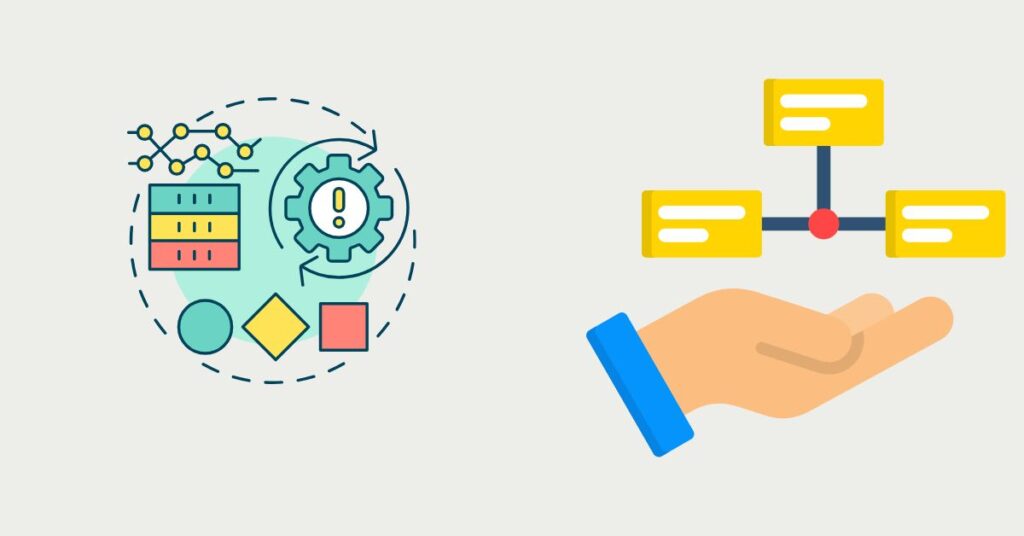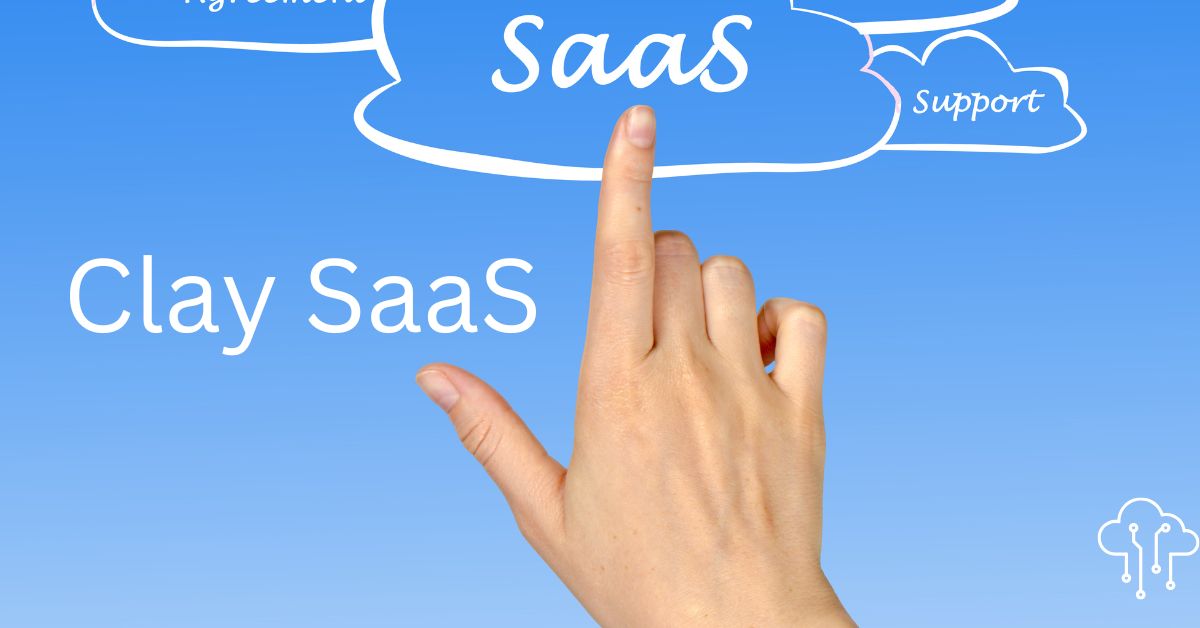Users of the fast-paced digital world of today want things to simply work. Most of us would sooner Google a solution than email customer service; none of us want to wait on hold for a support agent. This is where Clay SaaS comes in: a strong, easy-to-use self-service SaaS tool allowing clients to confidently serve themselves.
You are in for a treat if you have ever pondered what makes a modern SaaS application click with its users. Everything you need to know about Clay SaaS—from what it is and why it matters to how you could apply it and get benefits—is broken out in this post. All in plain, straightforward English.
From what standpoint does Clay SaaS operate?
Imagine a world in which your software users could onboard themselves, troubleshoot on their own, handle their own subscriptions, and feel entirely in charge. Clay SaaS is meant for precisely that. Emphasizing user empowerment, scalability, and cost-efficiencies, this current interpretation of the self-service SaaS paradigm
Fundamentally, Clay SaaS is designed for businesses seeking to save support expenses and provide better experiences for consumers. Clay hands the tools straight to your users instead of depending on big onboarding procedures or conventional sales staff.
Consider it as the IKEA of software: you can start right away without waiting for someone else to do it for you; you receive everything you need with concise instructions.
Is Clay CRM free?
Good query. Although Clay CRM isn’t completely free forever, users can investigate its capabilities using a free trial or freemium edition. Small teams and solopreneurs looking to test ideas before committing may find this rather handy.
You can go to a subscription tier as you begin to scale or want premium integrations. But you can use Clay CRM for free up until then.
Why the Model of Self-Service SaaS Works?
Allow us to make a brief diversion.
I helped a friend put up a CRM for his small company last year. Although the software we selected promised “ease of use,” it turned out to be three onboarding calls, two long support sessions, and a somewhat unhappy Saturday afternoon. He could have worked it out on his own in one hour if that tool had been designed as Clay SaaS.
The self-service SaaS approach has charm about it. It saves time, empowers consumers, and reduces support expenses.
The following explains some of the reasons more businesses are moving toward self-service:
Faster user onboarding
Reduce company support expenditures.
Contented consumers that feel in control
Greater scalability when user base expands
Companies like Slack, Notion, and Zoom have embraced self-service strategies and achieved phenomenal expansion. Using Clay SaaS allows you to accomplish the same.
Important Characteristics of Clay SaaS
a fantastic self-service. SaaS is more than just allowing users to “do it themselves.” It’s about arming people with the correct tools, knowledge, and security needed for success. Clay SaaS brings to the table these:
- Simple sign-up and onboarding
Users of Clay SaaS can register in a few seconds and start utilizing your offering immediately. Not many sales calls. Not a lot of back-and-forth emails. Just a simple, guided process with a welcome and intuitive vibe.
- In-app reference tools and guides
Nobody enjoys poring over out-of-date PDFs or awkward support systems. Clay provides clever in-app advice and contemporary, searchable knowledge libraries that enable users to quickly address challenges.
Would you like to include a chatbot? Just a few clicks will let you interface with apps like Intercom or Drift.
- Subscription and Billing Management
Allow your customers to cancel, downgrade, or update their plans without involving email support. Clay keeps things automated and seamless by combining with solutions like Stripe and Chargebee.
- Improved Safety
Security is no longer optional. To keep your users safe, Clay offers Single Sign-On (SSO), Multi-Factor Authentication (MFA), and even passwordless logins.

Methodically: How to Set Up Clay SaaS
Establishing Clay SaaS is simpler than you might believe. Here’s a basic guide:
First: Clearly specify your use case.
Are you creating a freelancer’s tool? Start-ups: Companies? Knowing your audience lets you customize the self-service encounter.
Second step: Select appropriate tools.
Choose a CRM, chatbot, analytics, and billing system that fit Clay quite naturally. Tools that really shine are HubSpot, Mixpanel, and Zendesk.
Third step: strengthen your basis of knowledge.
Add FAQ sections, how-to advice, and articles. Don’t overanalyze it. Grow from the top 10 queries people typically ask, starting from there.
Fourth: Personalize the User Experience
Using Clay allows you to change colors, add logos, and even customize instructions depending on user behavior.
Step 5: Start and Study
Watch user interaction with your self-service tools after you’re live. Continually improve using data and feedback.
Clay AI’s expenses are what?
Although Clay AI is not too expensive when compared to rivals, your usage level and selected plan will affect the price. Here you can look over pricing specifics. If you manage a small team or startup, the entry-level approach presents a compelling value argument. Larger companies could choose greater capabilities, tailored integrations, and more API use limits.
Whatever the strategy, Clay AI is designed to help you automate your processes and save time, so it usually pays for itself.
Real-Life Example: From Anxiety to Liberation
Introducing Sarah. She operates a small digital agency and needs a project tracking system devoid of a steep learning curve. She experimented with a couple of choices, but they either needed her to schedule demos or wait days for help.
She then came over a platform developed using Clay SaaS.
She had had within fifteen minutes:
registered.
finalized onboarding
asked her group.
changed her dashboard to be unique.
“It felt like the tool was made for me,” she remarked. “I had no need to chat with anyone. Just worked.”
She now tells everyone she knows about it. That is the force of personal autonomy.
What Does Clay Do Company-Wise?
The Clay firm works on simplifying automated prospecting, customer intelligence, and workflow integration. It lets teams compile data from multiple sources—including LinkedIn, Apollo, Clearbit, and many more—into one clever dashboard.
Clay lets sales and marketing teams create better processes and make quicker decisions by mixing artificial intelligence with data enrichment. Clay has your back whether your work involves automated outreach, enhancing contacts, or scraping lead data.
Why Great for Business is Clay SaaS?
Let’s start with the essentials. Why should you choose to build your product using Clay SaaS?
One saves money by doing this.
Support teams come with a cost. Self-service choices let you manage 10x more people using the same staff capacity.
- It is quite beautiful on scales.
Your system won’t buckle under demand as your consumer base increases. Every user can board and handle herself.
- It Boosts Conversion Rates
Users are more inclined to try and purchase your offering when they are free from waiting for demos or approval.
- Est builds confidence.
Giving consumers power honors their time. And fosters loyalty.
Ultimately, is Clay SaaS appropriate for you?
If you are:
Weary of following leads.
Flooding support tickets
Looking to grow without bringing on staff
Alternatively, you just want to provide your users with a seamless experience.
Then, indeed, Clay SaaS is exactly what you need.
It goes beyond technology as well. It is personal. Let users help themselves; you empower them. And enabled consumers to turn into devoted consumers.
Thus, consider what Clay SaaS may accomplish whether you are creating your first firm or improving a current product. You will save money, lower stress, and most importantly create something people really like using.
About ready to test Clay SaaS? Start small, pick quick lessons, and see how quickly your consumers develop affection for the experience.
If you’re exploring tools during your journey with the SAA Externship Guide, Clay SaaS can be a great example of how modern software makes things easier and more user-friendly from day one.

